Remembering the Belfast Pogrom
The systematic expulsion and murder of Catholics in 1920-22 must not be forgotten.
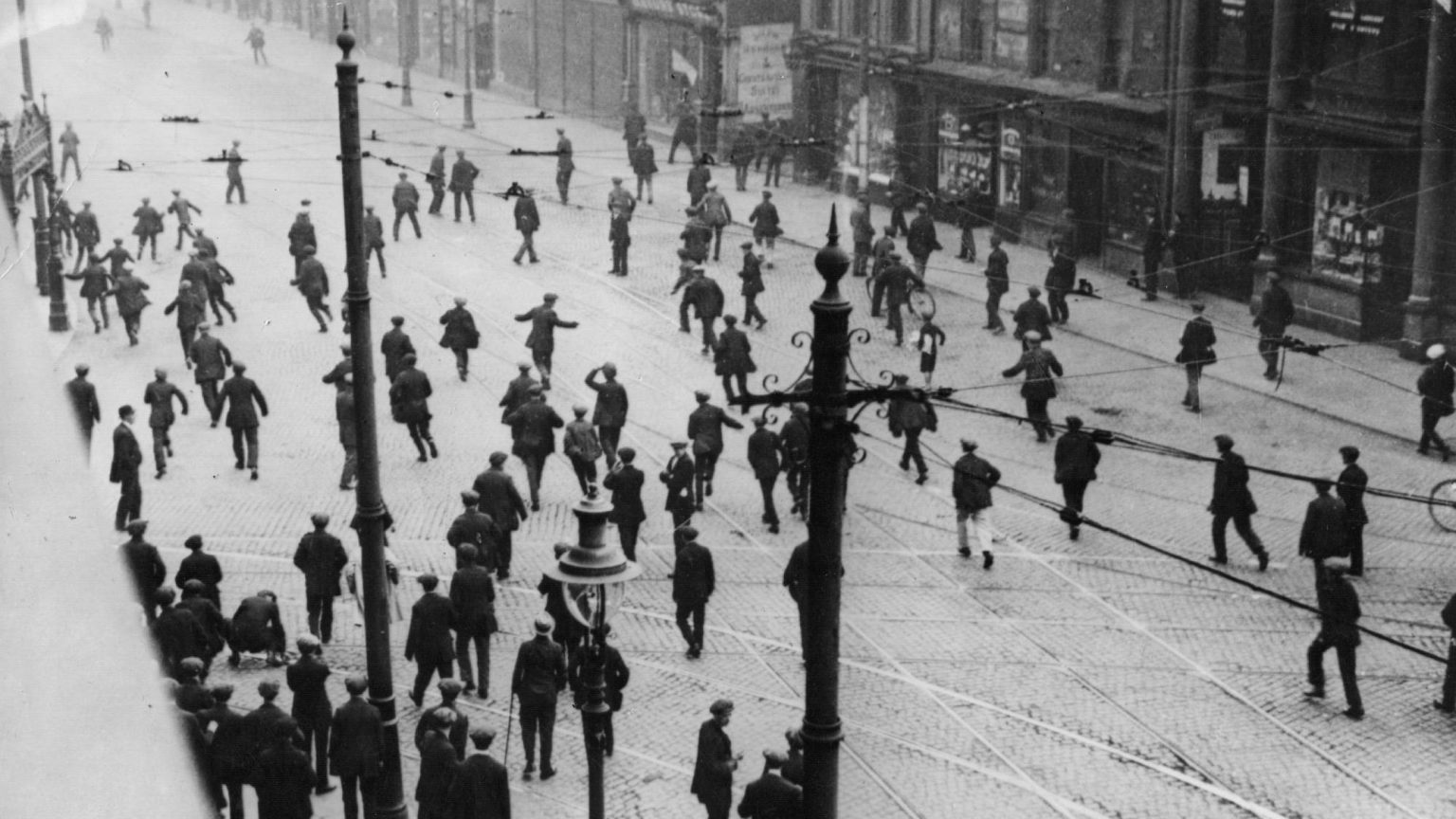
Want unlimited, ad-free access? Become a spiked supporter.
When UK prime minister Boris Johnson flew into Belfast to announce plans marking 100 years since the creation of Northern Ireland, he called it an ‘obvious cause for celebration’. ‘I love and believe in the union that makes up the United Kingdom’, he said, calling it ‘the most successful political partnership anywhere in the world’.
‘Success’ and ‘celebration’ are words not normally associated with the creation of Northern Ireland. After all, what is there to celebrate about a state forged in sectarianism and anti-Catholicism? Because there is no doubt that is precisely what it was. James Craig, Northern Ireland’s first prime minister, called it ‘a Protestant state and parliament for a Protestant people’. Basil Brooke, one of Craig’s successors, encouraged Unionists to follow his lead and not employ Catholics, bragging ‘I have not one about my place’.
This is what Johnson was celebrating. A polity where one third of the population was systematically mistreated by its Unionist rulers. A place where discrimination in jobs, housing, voting, politics, policing, the courts and culture was a way of life.
If a British prime minister offered ‘praise’ and ‘celebration’ to a society where Jews or blacks were treated as Catholics have been in Northern Ireland, can you imagine the uproar? No matter which way Boris spun the centenary bash, it was a grim reminder of Unionist misrule, from the sustained abuse of civil rights and exclusion of any meaningful form of political or social opposition to the very establishment of the state itself.
Eliminating opposition to Partition through terror
When the British government ignored democracy and legislated Partition in the Government of Ireland Act 1920, it still faced the problem of governing half-a-million nationalists in the north who wanted nothing to do with a British imposed border. Unionists, however, found a solution to the problem: the Belfast Pogrom.
This was a terror campaign lasting 20 months from 1920 until 1922. It was unleashed against Catholics in the greater Belfast area to ‘teach them a lesson’, and silence all opposition to the establishment of a Northern Ireland state. The pogrom involved large-scale expulsions of Catholics from their workplaces and from districts where they were a small minority, and violent attacks on isolated Catholic populations (1). Hundreds of innocent men, women and children were killed by loyalist murder gangs, many of whom were members of the temporary police force known as the Specials. Belfast Catholics were left traumatised and terrified by the scale of the murderous brutality brought down upon their heads.
And it was all carried out with tacit approval from on high. There is evidence that Unionist leaders like Edward Carson and James Craig indulged first in incitement, and then offered support to the pogromists in the terror’s aftermath (2). British leaders in London did nothing to stop it. They left Craig in control, and largely turned a blind eye to pro-regime outrages (3).
Carson’s speech and the shipyard expulsions
The atrocities began on the day of the shipyard expulsions.
In the 1918 General Election, the electorate had endorsed Sinn Fein’s mandate for a 32-county independent Ireland. Britain refused Irish independence, so, in 1919, the IRA launched what became known as the Irish War of Independence. Conscious of the vulnerability of Belfast Catholics to Unionist reprisals, the IRA carried out only limited operations in the north. In Belfast, Sinn Fein had little support. Nationalists supported the constitutional nationalist Irish Parliamentary Party and their Belfast leader Joe Devlin. Catholic Belfast had virtually ignored Sinn Fein and any Republican presence was both minimal and ineffectual.
But the situation changed dramatically on 12 July 1920, when Unionist leader Edward Carson addressed the Orange Order parade:
‘We in Ulster will tolerate no Sinn Fein… But we tell [the British government] this – that if having offered you our help, you are unable to protect us from the machinations of Sinn Fein, and won’t take our help; then we will take matters into our own hands… And those are not mere words. I hate words without actions.’
These were incendiary words. Most Ulster Protestants made no distinction between a Sinn Fein supporter and a Catholic. Carson’s speech therefore served to intensify animosity towards Catholics, turning them into legitimate targets for Unionist violence, particularly in Belfast, where they made up less than a quarter of the population. As The Times put it the next day, ‘Upon Sir Edward Carson lies, largely, the blame for having sown the Dragon’s teeth in Ireland’ (4).
When the inevitable attacks began, the nominal excuse was the IRA killing of a policeman shot several hundred miles away in Cork. Around 5,000 Protestant workers met at the gates of the Harland and Wolff Shipyard, and passed motions refusing to work alongside ‘Sinn Feiners’. Armed with iron bars, hammers and carrying Union flags, they worked their way through the shipyard looking for Catholics and ‘Rotten Prods’ – Protestant socialists and trade unionists who challenged Unionism.
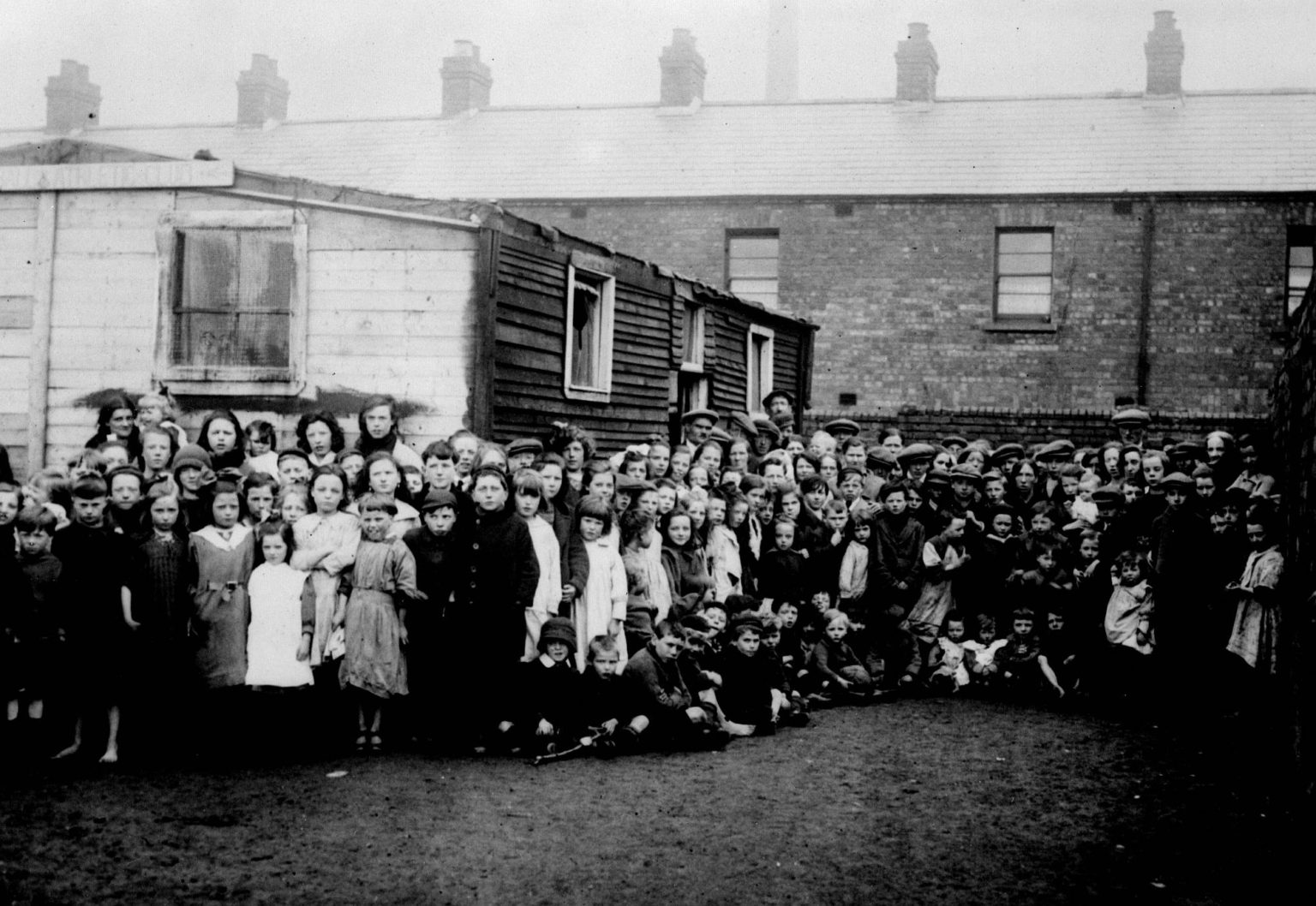
Many were savagely beaten that day. Some were thrown into the mouth of the River Lagan, while others jumped into the water to escape. Every single one of the several thousand Catholics and socialists there was driven out of the shipyard. The expulsions soon spread to other engineering and building firms and linen mills in Belfast, followed by the expulsion of Catholic women. In a short time 10,000 men and 1,000 women were expelled, never to return. The entire Catholic population of Belfast at the time was 93,000. In the following days and weeks, this fell dramatically.
As news of the expulsions spread, violence broke out in different parts of the city. Mobs several-thousand strong moved from the shipyard to attack the small Catholic enclave of Short Strand and its church of St Mathews nearby. As the fighting escalated, both sides fought hand-to-hand, threw sticks, bricks and bottles, and used guns and bombs. Several people were killed. Catholic homes and stores were raided and burned in the north and west of the city.
The orgy of destruction against Catholic and Rotten Prod property in Ballymacarrett in east Belfast was on a mass scale. On the second night, loyalist violence, which had hitherto been more spontaneous, became coordinated and developed into a campaign of religious and political cleansing (5). So systematic was it that the Ballymacarrett area in the east, once a very mixed area, was transformed into a Protestant monoculture.
Carson’s speech had unleashed a monster against the Catholic minority. The shipyard expulsions were to be the start of 20 months of murder and violence in greater Belfast. Though the overwhelming majority of attacks were aimed at nationalists, nationalists were not blameless. A small number were guilty of sectarian violence. Seeking revenge, they stoned trams full of returning shipyard workers and, in two incidents, they threw bombs into packed trams, killing five workers. In the House of Commons, Nationalist Party MP Joe Devlin accused the British government of ‘deliberately fomenting, or at least tolerating, a religious war in the North to justify [its] proposed Partition scheme’. Unionist MPs, including Carson, defended the expulsions of Catholics (6). Carson implied that for as long as the IRA was engaged in a war of independence, Belfast Catholics would be taught a lesson.
A few weeks later, Craig, Unionist leader and soon-to-be first prime minister of Northern Ireland, visited the shipyard to unfurl a huge Union flag. In his speech, he brought up the shipyard expulsions and told the crowd, ‘Do I approve of the action you boys have taken in the past? I say “yes”’.
Arming the loyalists
As the violence and evictions continued into August and September, barely any Catholic-owned shops or property remained standing in central Belfast. The London Daily News reported that, to date, ’95 per cent of the property destroyed by fire was caused by Unionists’ (7). But rather than call for an end to the violence which he had incited, Craig demanded the establishment of a Special Constabulary (the Specials). This effectively turned the pogromists into an official, armed police force.
London approved. Winston Churchill, secretary of state for the colonies, supported the move, and the British cabinet agreed to Craig’s request. The Specials were an entirely Protestant force, comprising recruits from the Ulster Volunteer Forcemen and the Orange Lodges. Speaking in parliament, Devlin was in no doubt as to the Specials’ function. ‘The Protestants are to be armed’, he said, ‘their pogrom to be made less difficult. Instead of paving stones and sticks they are to be given rifles.’
At night, the sky was red with the flames of Catholic homes on fire in different parts of the city. As the Belfast Pogrom continued, the Daily News reported practically all of the damage had been done to nationalists’ property and that few if any Catholic premises were left standing in Belfast, apart from in the Catholic stronghold of the Falls (8). Reporting on the July/August violence of 1920, the Daily News described ‘five weeks of ruthless persecution by boycott, fire, plunder and assault, culminating in a week’s wholesale violence probably unmatched outside the area of the Russian or Polish pogroms’ (9).
Each month the toll of dead and injured continued to rise. A refugee crisis was precipitated by the many thousands now evicted from their homes, as entire districts were religiously cleansed. Catholic enclaves came under nightly attack, particularly the small area around the Short Strand in east Belfast, where there were numerous attempts to burn down St Mathews church. The ‘Bone’ district of Oldpark, Clonard, and also York Road in the Docks area, were other small Catholic areas that came under constant siege from snipers and arsonists. As sectarian attacks continued during 1921 and 1922, and families fled, many retreated to the area around Weaver Street.
The Weaver Street killings
In February 1922, Catholic children playing with kids in the predominantly Protestant Milewater Street at the corner of Weaver Street were approached by two Specials who told the Catholic kids to go and ‘play with their own’. They did as they were told, and moved to Catholic-occupied Weaver Street and played on a swing attached to a lamppost. Ten minutes later a bomb was thrown into the middle of the children. As the bomb exploded gunmen also fired into Weaver Street. Two women and four children died of their injuries and many more suffered catastrophic injuries. In the following weeks, attacks intensified as Catholic residents in the area continued to be murdered. On 20 May, Thomas McShane was killed. On the same day, the remaining 148 families around Weaver Street were forced from their homes at gunpoint never to return. The religious cleansing of another part of Belfast was complete. Catholics would never return.
The pogrom entered a new phase. The violence became less spontaneous and more calculated. Victims were targeted in premeditated killings, some as reprisals for IRA actions carried out in the War of Independence. As murder gangs roamed the streets at night, looking for victims, the sense of foreboding was palpable, especially in more isolated and vulnerable districts. The pogrom was having its desired effect – nationalists were terrified and kept their heads down. Many loyalist murder-gang members were made up of police and the recently formed Specials. Devlin had been proved right when he warned the British government in parliament that its decision to arm such people made it easier for them to kill Catholics. The assassins wore British uniforms by day and murdered with impunity by night. Catholic families were paralysed with fear, dreading a bullet through the window or a sledgehammer through the door. They woke daily to news of more grizzly killings. They were desperate and had no one to whom they could turn.
The McMahon killings
In north Belfast, in the middle of the night, five men sledgehammered the door of the McMahon family. Eight men and three women were in the house. Publican Owen McMahon and his six sons were rounded up and ordered into the dining room, along with a family friend who worked in the family bar. McMahon’s wife Eliza got down on her knees and begged for the life of her family, but was smashed on the head with a gun. When Owen asked why his family was being singled out, one of the gunmen said it was because he was ‘a respected papist’. ‘You boys, say your prayers’, the gunman said, before opening fire.
The shooting continued for five minutes; five of the men were killed outright. The McMahons’ youngest son Michael survived the attack by hiding behind the furniture and pretending to be hit. Another son, John, survived his wounds, but, racked with survivor’s guilt, committed suicide sometime later.
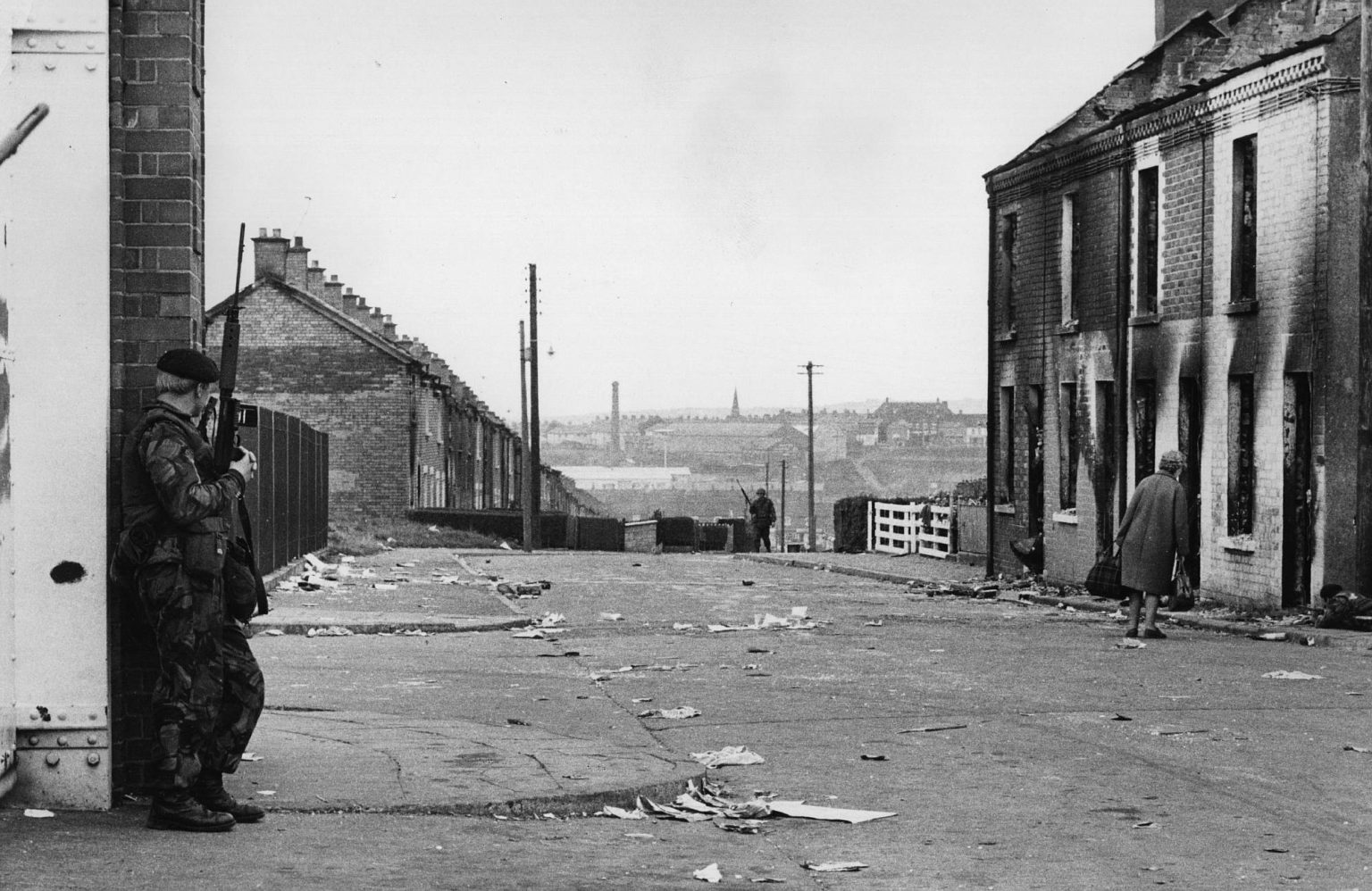
The murder-gang members were calm and methodical in their execution of the McMahon family. Many did not even bother to hide their police uniforms. Individuals were identified and named, not that it mattered. No policeman would ever be held to account for killing Catholics. They controlled the city through fear and terrified Catholics knew it.
Arnon Street killings
A week after the McMahon killings, a police constable was shot dead in the nationalist Old Lodge area. Police and Specials, bent on revenge, set out in armoured cars late at night, looking to punish any Catholic in the area. When their vehicle pulled to a halt, they walked to the nearest house and murdered one man. They then went to a house around the corner, and killed another man. Then they drove to Arnon street. Here they broke into a house and ran upstairs. Lying in bed was 70-year-old William Spallen and his 12-year-old grandson Gerald Tumelty. Spallen had buried his wife earlier in the day. In a witness statement Tumelty said:
‘Two men came into the room; one was in the uniform of a policeman. They asked my grandfather his name and he said William Spallen. The man in plain clothes fired three shots at him. When I cried out, he said “lie down or I will put a bullet in you. They snatched £20 my Grandfather had set aside to settle my Grandmother’s funeral expenses … I was 12 years old 11 February last; I know if I tell a lie I will go to Hell. I recognised the man in plain clothes. I had seen him before on the Old Lodge road.’ (10)
Next the attackers used a sledgehammer to break into the house next door, where they found Joseph Walsh in bed with his seven-year-old son Michael and his two-year-old daughter Bridget. Joseph Walsh was bludgeoned to death with the sledgehammer and young Michael was shot in bed — he died of his wounds the next day. Later in the evening, another man, John Mallon, was shot dead. Like the McMahon killings, the murder gang were identified and named by witnesses as policemen. But the Arnon Street killers remained calm. They had no fear of witnesses.
The burnings
In The Burnings 1920, Pearse Lawlor tells the story of how Banbridge, Dromore and Lisburn on the outskirts of Belfast erupted in anti-Catholic violence when hundreds of Catholics were forced to flee (11). He recounts recent conversations with highly articulate, intelligent and well-read middle-class Protestants in Lisburn who have no idea about the anti-Catholic violence which changed their communities forever. It had never been mentioned or taught in local schools. And little wonder. Since those days, there had been a consistent attempt to erase or downplay the severity of anti-Catholic violence. Lawlor writes that many sought to ‘forget on purpose’ that the atrocities took place.
Between 1969 and 1972 thousands of Catholics were once again burnt out of their homes in different parts of Belfast. Once again, hundreds of Catholics were murdered by loyalist killer gangs. And just like 1920-22, some of the killers were also members of state forces, in this case, the Royal Ulster Constabulary and Ulster Defence Regiment.
I was seven years old in 1972, when one night I was woken up, and wearing only my Y-fronts, forced to flee with my family through the front door, while being jeered by a loyalist mob. They gave my family 10 minutes to get out or they would burn down our house. We lived in Ballymacarrett. And just like those families who fled Ballymacarrett in the Belfast Pogroms of 1920-22, we would never return.
If the planning for the Northern Ireland 2021 Centenary celebration is any indication, British officials remain as ignorant of Northern Irish history as ever. They even chose to brand the centenary with an image of Seamus Heaney – a bizarre blunder of epic proportions. Even the dogs in the street know that Ireland’s greatest poet was opposed to partition, describing the unionist state as sectarian and akin to a caste system.
The calamity of the centenary launch reflects the 100 years of calamity that is partition. Whether we are Catholic, Protestant or Dissenter, we are capable of so much better than the Northern Irish state. It’s time for a new conversation about Ireland’s future. It’s time for a united Ireland.
Kevin Rooney is convenor of the Academy of Ideas Education Forum and co-author of The Blood-Stained Poppy.
(1) See The most dangerous book in Ireland, Irish Central, 30 June 2020
(2) A Treatise On Northern Ireland, Volume 2: Control, by Brendan O’Leary, Oxford University Press, 2019, p26,
(3) A Treatise On Northern Ireland, Volume 2: Control, by Brendan O’Leary, Oxford University Press, 2019, P26.
(4) See The Belfast Shipyard Expulsions and Their Aftermath, 21 July 1920
(5) See The Belfast Shipyard Expulsions and Their Aftermath, 21 July 1920
(6) A Treatise On Northern Ireland, Volume 2: Control, by Brendan O’Leary, Oxford University Press, 2019, p26
(7) For detailed elaboration of press reports and scale of damage, see Northern Ireland: The Orange State, by Michael Farrell, Pluto Press, 1976, pp27-37
(8) Northern Ireland: The Orange State, by Michael Farrell, Pluto Press, 1976, p31.
(9) Northern Ireland: The Orange State, by Michael Farrell, Pluto Press, 1976, p31
(10) Referenced in ‘Pogrom or Civil War? The North East in the Irish Revolution’, by Kieran Glennon, The Irish History Show, 7 March 2014
(11) See, The Burnings 1920, by Pearse Lawlor, Mercier Press 2005.
You’ve read 3 free articles this month.
Support spiked and get unlimited access.
Help us hit our 1% target
spiked is funded by readers like you. It’s your generosity that keeps us fearless and independent.
Only 0.1% of our regular readers currently support spiked. If just 1% gave, we could grow our team – and step up the fight for free speech and democracy right when it matters most.
Join today from £5/month (£50/year) and get unlimited, ad-free access, bonus content, exclusive events and more – all while helping to keep spiked saying the unsayable.
Monthly support makes the biggest difference. Thank you.

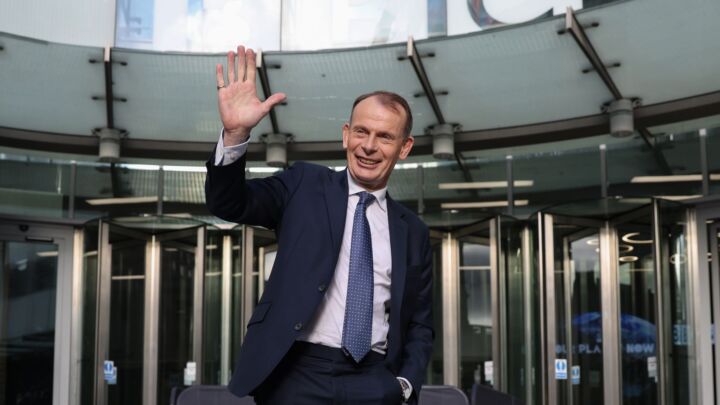
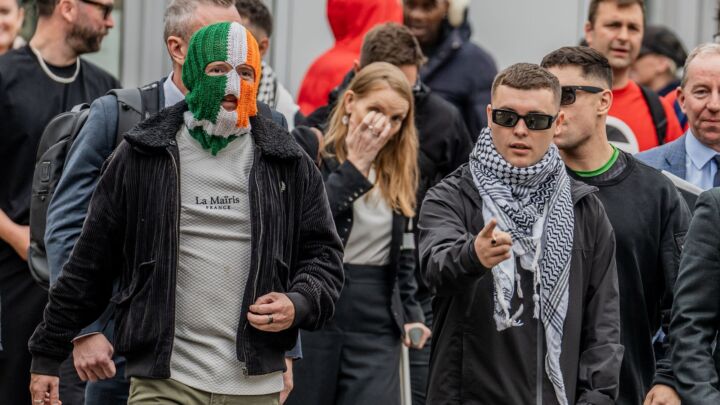


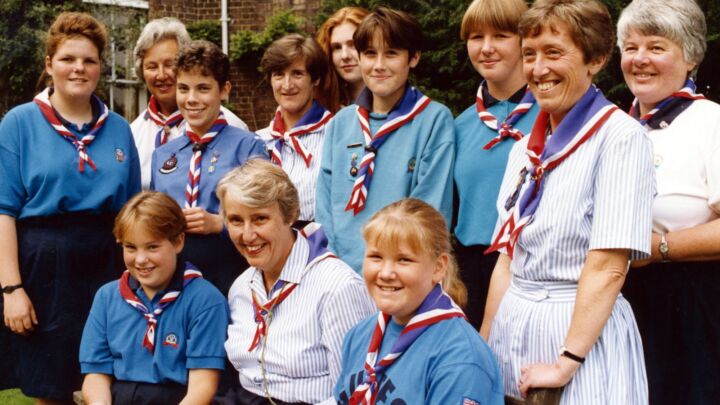
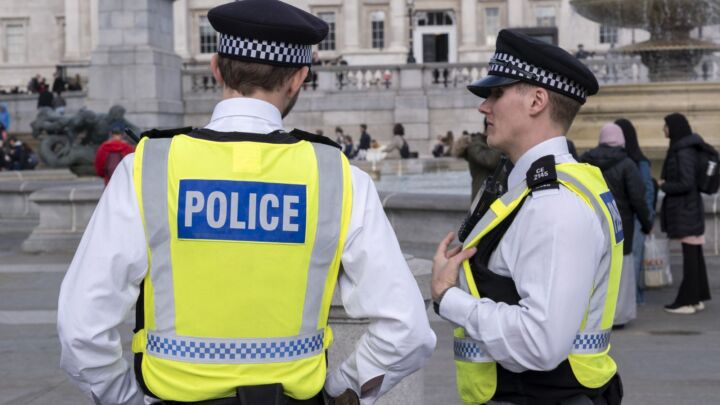
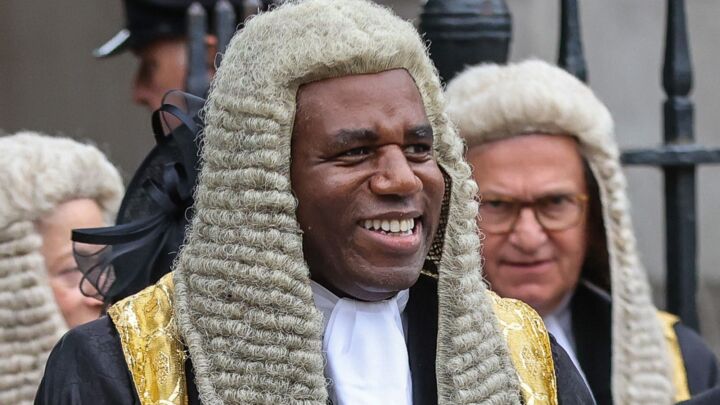
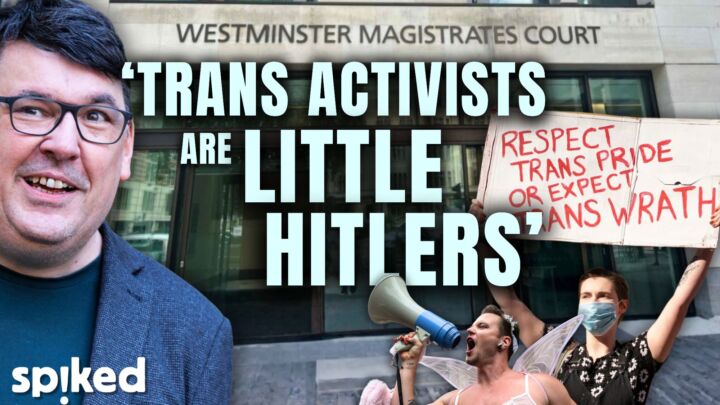

Comments
Want to join the conversation?
Only spiked supporters and patrons, who donate regularly to us, can comment on our articles.